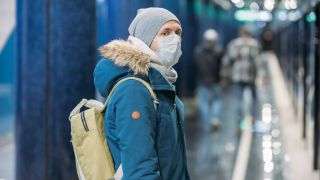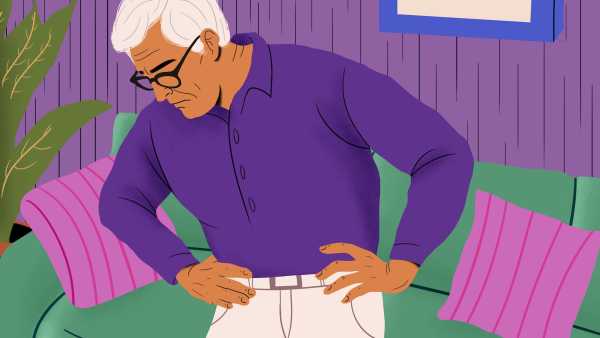
As the new human coronavirus spreads around the world, individuals and families should prepare — but are we? The Centers for Disease Control has already said that it expects community transmission in the United States, and asked families to be ready for the possibility of a “significant disruption to our lives.”
Be ready? But how? It seems to me that some people may be holding back from preparing because of their understandable dislike of associating such preparation with doomsday or “prepper” subcultures. Another possibility is that people may have learned that for many people the disease is mild, which is certainly true, so they don’t think it’s a big risk to them. Also, many doomsday scenarios advise extensive preparation for increasingly outlandish scenarios, and this may seem daunting and pointless (and it is). Others may not feel like contributing to a panic or appearing to be selfish.
Forget all that. Preparing for the almost inevitable global spread of this virus, now dubbed COVID-19, is one of the most pro-social, altruistic things you can do in response to potential disruptions of this kind.
We should prepare, not because we may feel personally at risk, but so that we can help lessen the risk for everyone. We should prepare not because we are facing a doomsday scenario out of our control, but because we can alter every aspect of this risk we face as a society.
All about COVID-19

—Live updates on the new coronavirus
—How you can prepare for a coronavirus epidemic
—Why are children ‘missing’ from coronavirus outbreak?
—How coronavirus compares with flu
—Will a face mask protect you?
That’s right, you should prepare because your neighbors need you to prepare—especially your elderly neighbors, your neighbors who work at hospitals, your neighbors with chronic illnesses, and your neighbors who may not have the means or the time to prepare because of lack of resources or time.
Prepper and survivalist subcultures are often associated with doomsday scenarios and extreme steps: people stocking and hoarding supplies, building bunkers and preparing to go off the grid so that they may survive some untold catastrophe, brandishing weapons to guard their compound while their less prepared neighbors perish. All this appears both extreme and selfish, and, to be honest, a little nutty—just check the title of the TV series devoted to the subculture: Doomsday Preppers, implying, well, a doomsday and the few prepared individuals surviving in a war-of-all-against-all world.
It also feels like a scam: there is no shortage of snake oil sellers who hope stoking such fears will make people buy more supplies: years’ worth of ready-to-eat meals, bunker materials and a lot more stuff in various shades of camo. (The more camo the more doomsday feels, I guess!)
The reality is that there is little point “preparing” for the most catastrophic scenarios some of these people envision. As a species, we live and die by our social world and our extensive infrastructure—and there is no predicting what anybody needs in the face of total catastrophe.
In contrast, the real crisis scenarios we’re likely to encounter require cooperation and, crucially, “flattening the curve” of the crisis exactly so the more vulnerable can fare better, so that our infrastructure will be less stressed at any one time.
What does “flattening the curve” mean for the current COVID-19 threat facing us: the emerging pandemic of this human coronavirus? Epidemiologists often talk about two important numbers: R0 or how infectious a disease might be, expressed as the number of people that are infected by each person who’s been infected; and the case fatality ratio (CFR): the number of people who die as a result of being infected. For example, an R0 of two means each infected person infects two people on average, while a number less than one means the disease is likely dying out in the population. Some diseases are deadlier than others: the average case fatality ratio for Ebola has been around 50 percent, for example, while the common cold is rarely deadly for otherwise healthy individuals.
But here’s the thing. Such epidemiological numbers are not fixed or immutable. They are not constants that exist independent of our actions. Where they land depends on the characteristics of the pathogen but also our response. By preparing now, we can alter both of those key numbers and save many lives.
The infectiousness of a virus, for example, depends on how much we encounter one another; how well we quarantine individuals who are ill; how often we wash our hands; whether those treating the ill have proper protective equipment; how healthy we are to begin with—and such factors are all under our control. After active measures were implemented, the R0 for the 2003 SARS epidemic, for example, went from around three, meaning each person infected three others, to 0.04. It was our response to SARS in 2003 that made sure the disease died out from earth, with less than a thousand victims globally.
Similarly, how many people die of seasonal influenza (or COVID-19) depends on the kind of health care they receive. In China, death rates are much higher in the overwhelmed Hubei province than the rest of the country exactly because of the quality of the care. Hospitals only have so many beds, especially in their intensive care units, and those who have a severe case of COVID-19 often need mechanical ventilation and other intensive care procedures. When they are out of beds, people end up languishing at home and suffering and dying in much larger numbers.
All this means that if we can slow the transmission of the disease—flatten its curve—there will be many lives saved even if the same number of people eventually get sick, because everyone won’t show up at the hospital all at once. Plus, if we can flatten that curve, there is more time to develop a vaccine or find antivirals that help.
There are now COVID-19 cases around the world, and epidemiological data from tens of thousands of cases. Here’s what we know: no doubt to the relief of parents everywhere, this disease is mild to nonexistent in children. There are almost no pediatric deaths and very few kids even seem to fall sick (though children may still be having clinically barely detectable cases, thus infecting others).
On the other hand, for the elderly or for people who have other diseases or comorbidities, it’s very serious, with death rates reaching up to 15 percent. It’s also a great threat to health workers who handle people with the virus every day, with thousands of cases already. Overall, it appears to have a case fatality rate around 2 percent, which is certainly very serious: seasonal flu, a serious threat in and of itself, has a case fatality rate around 0.1 percent in the United States, so this coronavirus is about 20 times as deadly (though again, this number may get much better or worse depending on the kind of care we can provide).
This article was first published at ScientificAmerican.com. © ScientificAmerican.com. All rights reserved Follow Scientific American on Twitter @SciAm and @SciamBlogs. Visit ScientificAmerican.com for the latest in science, health and technology news.
Sourse: www.livescience.com





